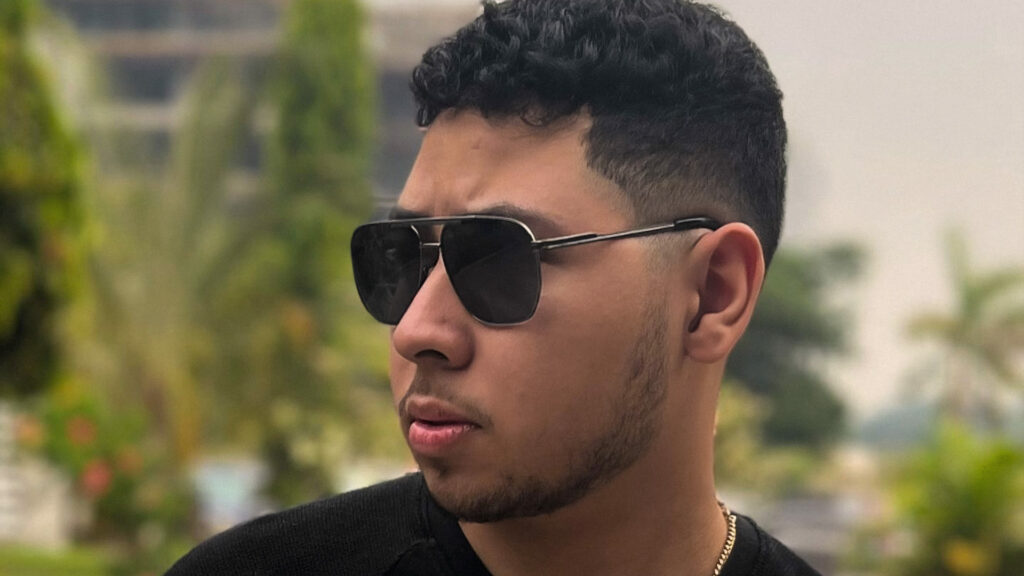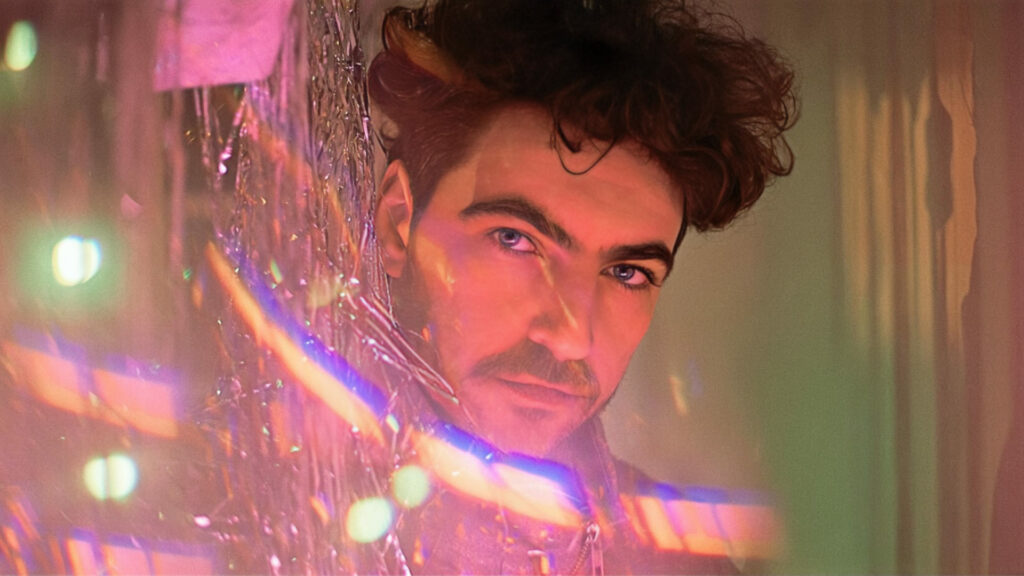In today’s highly mediated environment, the act of finding new art and music is perhaps more exciting than ever before, involving an enjoyable process of discovery where you can start off with something as innocuous as a targeted ad on Instagram only to find yourself upright at 3 AM, thoroughly immersed via the algorithm into a landscape of culturally recurring and well-produced visual motifs.
In late April, I found myself flicking through the entire Dreamstation catalogue after listening to Hxly Xo and Bleach. Bath’s Auricle collaboration. At some point, I watched the official music video for hxly xo’s APATHY and found myself fascinated by an intense, pop culture mashup that hit on an emotional level.
It was only when I got talking to Amore however, another producer on the Dreamstation label, that I checked out the Nedaj + Amore collaboration track, BREAKER, to find a similar art style, which I would later discover was by the same visual artist, timesgone. As someone interested in aesthetics, I’m of the serious opinion that when art historians look back on the art from our time, which is to say, the first half of the twenty-first century, they will not look to any highly contrived notions of curated or institutional art but rather, I suspect, the really important art will be found on Instagram and TikTok that, in retrospect, will form art movements ex post facto of the memetic and the instantaneous.
What was interesting to me, especially, was the way I’d come to find timesgone’s artwork in particular, which in many ways, was a process that emulated the quivering sensation of watching the music videos for, say, APATHY or BREAKER.
This fidgety world of pop culture mashups and late-night breakcore was the process by which I had approached timesgone’s visual art, and I wondered then, how that differed from the way timesgone approached their own art, as the person responsible for creating it?
“Since I was a kid, I have always liked the aesthetics of the PS2 video games and especially their OSTs.” timesgone answered. “The process of becoming a visual artist started with creating basic videos with my favourite songs back in 2020. Artists like Nedaj, Optic Core, AKIBA, and many more have inspired me to keep improving my editing skills. One day, I found a glitch artist named YOVOZOL, who inspired me to create my own glitch art. After months of learning and trying new things, I found my own style, and here I am now, working with my favourite artists.”
It should be said that one aspect of timesgone’s art that stood out to me in particular was the act of condensing the informational, the procedure of concentrating ephemeral images into something that wasn’t just culturally ephemeral but rather approached a kind of pure appearance.
A lot of contemporary artists are essentially working with time now, the desperate attempt through the medium of time, thirty seconds or less, say, to have people take notice of something worth being seen. Whilst I imagine a sense of desperation has always dogged the art world, there’s this growing proximity to time as a medium that consequently brings the passage of time to the foreground of the art itself, especially where that thing we call art appears today on platforms like Instagram, TikTok, etc. Unlike so many artists still looking for institutional approval, it seems timesgone has taken a pragmatic approach to the problem.
“Times change, so every artist has to adapt to their period of time to expose their art in many different ways. Nowadays, social media has taken over, so if you are an independent artist, the best way to become known and build an audience is definitely TikTok, Instagram, Youtube, and Spotify.”
Certainly, the evolution of art and music in our contemporary digital landscape is shaped by those platforms, which have quickly become not just avenues for sharing but also integral parts of the creative process itself, shaping how we discover and interact with art and music. In fact, it could be argued that the pressure to capture attention within fleeting moments is perhaps the defining aspect of contemporary art – whether we like it or not. Likewise, timesgone’s convergence of influences from PS2 aesthetics to glitch art and AMVs speaks to the eclectic nature of modern artistic expression with a journey that mirrors the trajectory of many contemporary artists, starting from simple experimentation and finding inspiration within a community of fellow creators.
“If it wasn’t for Spotify,” timesgone adds, “I wouldn’t have found the producers that inspired me to make my visuals. If it hadn’t been for Instagram and TikTok, I wouldn’t have been able to build my audience and meet all of the artists that I work with nowadays. And if it wasn’t for YouTube, I wouldn’t have found my passion for glitch art.” Even so, it should be said that timesgone’s visual art goes beyond the glitchy aesthetic made popular on TikTok to encompass a wide range of styles, best exhibited through the fresh reworking of AMVs (Anime Music Videos) for What’s it for? and Auricle.
“I remember the first AMV’s I ever watched were simple videos with some anime scenes like Dragon Ball, Bleach or Naruto with rock songs in the background like Linkin Park, and it was epic.” timesgone replied in reference to a question about the resurgence of anime music videos. “I’m pretty sure that most of the people born between the 90’s-00’s grew up watching those. These AMV’s became so popular by that time, and you know how it is, fashion always comes back. Adult swimming had a huge impact on this kind of video as well. The promotions broadcasted by that time were so similar to the visuals that are made now for this genre, so in conclusion, I’d say that the old aesthetics are back, but improved.”
Next story


